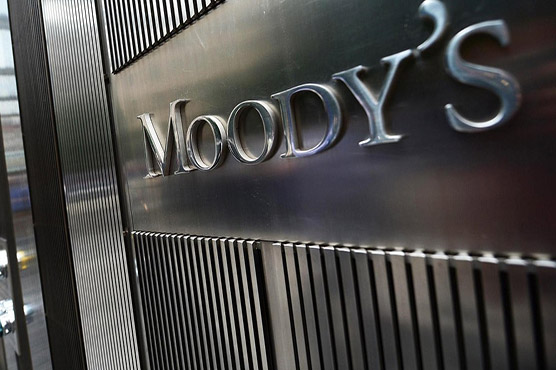Moody's changes five Pakistani banks' outlook to stable from negative

The rating actions follow Moody's decision on Dec. 2 to affirm the B3 rating for Pakistan's outlook.
KARACHI (Dunya News) – Moody’s Investors Service ("Moody’s") on Wednesday affirmed the B3 long-term local currency deposit ratings of five Pakistani banks, and changed the outlook to stable from negative.
The banks include Allied Bank Limited (ABL), Habib Bank Ltd. (HBL), MCB Bank Limited (MCB), National Bank of Pakistan (NBP) and United Bank Ltd. (UBL).
The rating actions follow Moody’s decision on December 2 to affirm the B3 rating for the Government of Pakistan and change the outlook on the sovereign rating to stable from negative and reflect reduced external vulnerability risks and ongoing fiscal reforms.
The banks’ rating actions reflect improvements in the operating environment in Pakistan and in the country’s sovereign credit profile, which affect the banks’ given (1) their high government exposures that link their credit profiles to that of the government; and (2) the expectation that the government’s capacity to support banks in case of need will not deteriorate.
Factors which affected banks’ outlooks
The primary driver of Moody’s decision to change the five Pakistan banks’ outlooks to stable is the extensive interconnectedness between their balance sheets and sovereign credit risk, owing to the banks’ high exposures to government securities.
According to Moody’s estimates, as of the latest available information, the five banks’ direct exposure to government credit risk stood at around 10.2x of Tier-1 capital for ABL, 8.1x for HBL, 6.4x for MCB, 9.5x for NBP and 6.8x for UBL.
The high direct exposure to government credit risk, in addition to the primarily Pakistan focus of their operations, links the banks’ credit profile to that of the government. As a result, the improvements in the operating environment and in the sovereign credit profile have eased pressures on banks as well.
The stable outlook assigned to the banks’ local currency deposit ratings also reflects Moody’s expectation that the government’s capacity to support banks in case of need will not deteriorate.
This is reflected by the stable outlook on Pakistan’s sovereign B3 bond rating which is driven by reduced external vulnerability risks on the back of policy adjustments and currency flexibility, as well as ongoing fiscal reforms that will mitigate risks related to debt sustainability and government liquidity.
The local currency deposit ratings of NBP and HBL incorporate one notch of support uplift from their caa1 baseline credit assessments.
Ratings affirmations
Moody’s decision to affirm the banks’ ratings reflects their stable deposit-based funding structures, high liquidity buffers and good earnings generating capacity, as well as Pakistan’s high growth potential.
These credit strengths balance banks’ modest capital buffers and high asset risks, as well as their high exposure to the government, which links their credit profile to that of the government.
Moody’s does not have any particular environmental, social or governance concern for the banks included in this action, and does not apply any corporate behaviour adjustments to them.
How ratings change?
The outlook on the five affected banks’ local currency deposit ratings is stable, aligned with the stable outlook on the sovereign rating of the government of Pakistan.
Further improvements in the operating environment and in the sovereign’s credit risk profile could place upward rating pressures.
Moody’s would downgrade the banks’ ratings in the event of a weakening of the Pakistan sovereign’s creditworthiness.
Additional pressure may arise from a weakening in banks’ baseline credit assessment, driven by asset quality pressures that also affect banks’ capital buffers.

